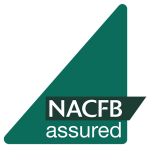Table of Contents
What is a bridging loan?
A bridging loan is a type of short-term loan that is typically used to bridge a gap between the purchase of a new property and the sale of an existing property.
In the United Kingdom, bridging loans are often used by property investors and homeowners who need to quickly secure financing in order to complete the purchase of a new property before they have sold their current property.
Bridging loans can be used for a variety of purposes, including:
- refurbishment projects,
- property development
- buying a property at auction
They are typically secured against the borrower’s existing property or the property being purchased and are usually repaid within a few months to a year.
Bridging loans typically have higher interest rates than traditional mortgages due to the short-term nature of the loan.
Whatever your needs, we have access to a wide range of bridging loan products from an extensive panel of lenders.
Bridging loans can help:
- Securing a property before completing the sale of your existing property
- Broken sale chains - bridging the gap between purchases
- Auction purchases - quick completion timescales
- Renovation - a traditional mortgage may not be available until the works are complete
- Below market value - enabling you to possibly take advantage of the open market value of the property
- Un-mortgageable properties, for example if there’s no kitchen or bathroom
- Commercial property purchase
- Refurbishment projects to sell or let
- Cross Charge and subject property
- Change of use - if changing the purpose of a building
- Buy-to-let - purchase-to-let
Do you need finance for your property portfolio?
Or call and speak to one of our specialist brokers on 0800 316 2224

Mortgage calculator
Do you want a guide to see how much your payments would be when borrowing for a property.
Our calcualtor covers bridge, residential, refurbishment and commercial.
Why should I schoose a bridging loan?
Why should I choose a Bridging Loan?
A bridging loan is a type of short-term loan that is used to “bridge the gap” between the purchase of a new property and the sale of an existing property.
They are often used when a homeowner wants to buy a new house before they have sold their current home, or when a buyer needs to move into a new property before their current property has been sold. Bridging loans can be an attractive option because they allow the borrower to purchase their new property quickly, without having to wait for their existing property to sell.
They can also be useful for borrowers who need to close on a property purchase quickly due to a deadline, such as a change in job location or the expiration of a previous offer on the new property.
There are several factors to consider when deciding whether a bridging loan is right for you.
Some of the pros of taking out a bridging loan include:
They can provide quick access to funds: Bridging loans can be arranged and approved very quickly, so you can move forward with your property purchase without delay.
They can help you take advantage of time-sensitive opportunities: If you have the opportunity to buy a property that you don’t want to miss out on, a bridging loan can help you act quickly.
They can be less risky than alternative financing options: In some cases, bridging loans can be less risky than other types of financing, such as taking out a second mortgage on your existing property.
However, there are also some potential downsides to consider.
Some of the downsides of taking out a bridging loan include:
They can be expensive: Bridging loans typically have higher interest rates than other types of loans, so they can be more expensive in the long run.
They can be short-term: Bridging loans are usually only for a few months or a year at most, so you will need to have a plan in place for repaying the loan or refinancing it before the term ends.
They may require additional collateral: Some bridging loan lenders may require additional collateral, such as a second property, in order to secure the loan.
Overall, whether a bridging loan is right for you will depend on your individual circumstances and financial goals. It is important to carefully consider all of your options and weigh the pros and cons before deciding whether to take out a bridging loan.
How much does a bridging loan cost?
The cost of a bridging loan can vary depending on a number of factors, including the lender, the amount of the loan, the length of the loan term, and the borrower’s creditworthiness and income.
In general, bridging loans tend to have higher interest rates than other types of loans, such as mortgages or personal loans. This is because they are considered to be higher risk for lenders due to their short-term nature and the fact that they are often used by borrowers who may not have a strong credit history or sufficient income to qualify for other types of financing.
As a rough guide, bridging loan interest rates in the UK can range from around 0.5% to 1.5% per month, or 6% to 18% per year. This means that on a £100,000 bridging loan taken out for one year at an interest rate of 1% per month, the total interest and fees payable could be around £12,000.
It’s important to note that these are just estimates and the actual cost of a bridging loan will depend on the specific terms and conditions of the loan agreement. It’s always a good idea to shop around and compare different lenders and loan products to find the best deal for your needs.
It may also be helpful to speak with a financial advisor or mortgage broker who can help you understand your options and find a loan that meets your needs and budget.
How much can you borrow with a bridging loan?
The amount that you can borrow with a bridging loan will depend on several factors, including the lender, your creditworthiness and income, and the value of the property that you are purchasing or refinancing. In general, bridging loans can range from a few thousand pounds to several million pounds.
The amount that you can borrow may also be influenced by the loan-to-value (LTV) ratio of the property. The LTV ratio is a measure of the amount of the loan compared to the value of the property.
For example, if you are purchasing a property for £200,000 and taking out a £100,000 bridging loan, the LTV ratio would be 50%. Some lenders may have maximum LTV ratios that they will lend at, so it’s important to check with the lender to see what their policies are.
It’s also worth noting that some bridging loan lenders may require additional collateral, such as a second property, in order to secure the loan. This may affect the amount that you can borrow.
Overall, the amount that you can borrow with a bridging loan will depend on your individual circumstances and financial goals. It’s always a good idea to speak with a financial advisor or mortgage broker who can help you understand your options and find a loan that meets your needs and budget.
How to apply for a bridging loan
To apply for a bridging loan, you will typically need to provide the lender with information about your income, assets, debts, and credit history, as well as details about the property that you are purchasing or refinancing. Here are some steps you can follow to apply for a bridging loan:
Research different lenders or speak to a broker like Clever Lending who understand the market, lenders and can help with the process.
Our knowledge spans the reason for your loan, different financial statuses and which lender is likely to say yes, preventing multiple applications.

Gather the required documentation: Most lenders will require you to provide a range of documentation to support your loan application, including proof of income, bank statements, and details of any debts or liabilities. It’s a good idea to have these documents ready before you start the application process.
Fill out the loan application: Once you have found a lender or broker and gathered the required documentation, you will need to fill out a loan application form. This will typically include information about your personal and financial circumstances, as well as details about the property you are purchasing or refinancing.
Submit the application: Once you have completed the loan application, you will need to submit it to the lender along with any required documentation. It’s a good idea to do this as soon as possible to ensure that your application is processed in a timely manner.
Wait for a decision: Once you have submitted your application, the lender will review it and decide whether to approve or decline your loan request. This process can take a few days to a week or more, depending on the lender and the complexity of your application.
If your loan application is approved, the lender will provide you with a loan offer outlining the terms and conditions of the loan, including the interest rate, fees, and repayment schedule. It’s important to carefully review the offer before accepting it to make sure that it meets your needs and budget.
Do you need finance for your property portfolio?
Or call and speak to one of our specialist brokers on 0800 316 2224
Bridging Loan FAQ
The difference between a bridging loan and a mortgage is that the loan can be secured against a property that may not be suitable for a normal mortgage loan.
- For example an uninhabitable property that is to be refurbished
- A property whose title will be changed
- If the use of the property is to be changed throughout the course of the loan.
In fact there are many different uses for a bridging loan.
Funds are available much more quickly than a mortgage; typically 3-4 weeks and can be much faster in certain instances. The bridge loan is often based on the Open Market Value of the property, rather than the purchase price.
This is especially useful when buying from a receiver/auction house.
As an example, you may have found your dream home, but need to sell your current one before purchasing it. There could be lots of interest in the home that you want to buy. A bridging loan could allow you to buy the new property, before selling your current one. You would market your current property as normal and once it sold repaid the bridging loan. (note this normally needs to be within 12 months)
As a further example, bridging loans could be used when you are:
- looking to buy a property for investment purposes
- such as a buy to let property
- commercial property purchase
- or even a refurb and sell project.
This can provide the turn-around speed and flexibility to work within your requirements and timeframes.
The bridge loan term can be anywhere from 1 month up to (usually) a maximum of 12 months. There is not usually a maximum loan amount, as they are assessed based on the proposed usage, exit method and criteria on a case by case basis.
You can pay off a bridge loan at any time during the loan term.
The interest payments for the bridging loan facility can be rolled up throughout the term, which means there would be no monthly interest payments to worry about. Interest rates on bridging loans are monthly rates, not annual. A bridging loan charging 1% interest per month will cost 12% over a year.
Interest rates will differ depending on your personal circumstances and the property type, use, location etc.
The nature of a bridging loan means you need speed and efficiency in any application made.
Once you have submitted an enquiry, we will get an initial decision to you within 24 hours and contact you at your earliest convenience to progress your application.
A bridge loan can be arranged quickly which is why it is used when finance needs to be attained in a short time scale. The lender of the bridge loan will carry out their own checks to ensure the applicant meets the lending criteria.
Due to the nature of bridge loan lenders typically being smaller and more flexible, the time scales could be substantially shorter than a typical mortgage or loan product.
Bridging loans can be regulated or unregulated depending on the use of the property, unregulated bridging means it’s not governed by the Financial Conduct Authority (FCA). It’s always important that you are made aware of the full terms, all fees, charges and conditions of the loan, whether its regulated or not.
We have access to both regulated and unregulated bridging loans.
We have access to Bridging loans starting at £50,000 up to £10m.
Some of the standard fees you would expect to pay as a part of any bridge loan deal would be;
A Lender’s arrangement fee
A fee is commonly charged by a lender for providing the loan facility and is typically two percent (2%) of the loan amount. In some instances, it can be rolled within the loan depending on client or lender requirements.
An Exit fee
This fee may be charged by the lender when the loan is repaid. When charged, it is usually around one month’s worth of interest regardless of whether the loan has run to its full term or was completed early.
A Surveyor’s fee
A fee will usually be payable to the firm hired to survey the property which is usually required as a part of the finance proposition process.
Legal fees
As with a standard mortgage, bridge finance must be processed with all the usual legal requirements stipulated by regulations. In some cases, lenders have in-house legal professionals which may apply these costs into the lender’s arrangement fees.
A Broker Fee
Clever Lending charge a broker fee for their expertise in finding and arranging your required finance, looking across a panel of lenders with multiple products and options.




















